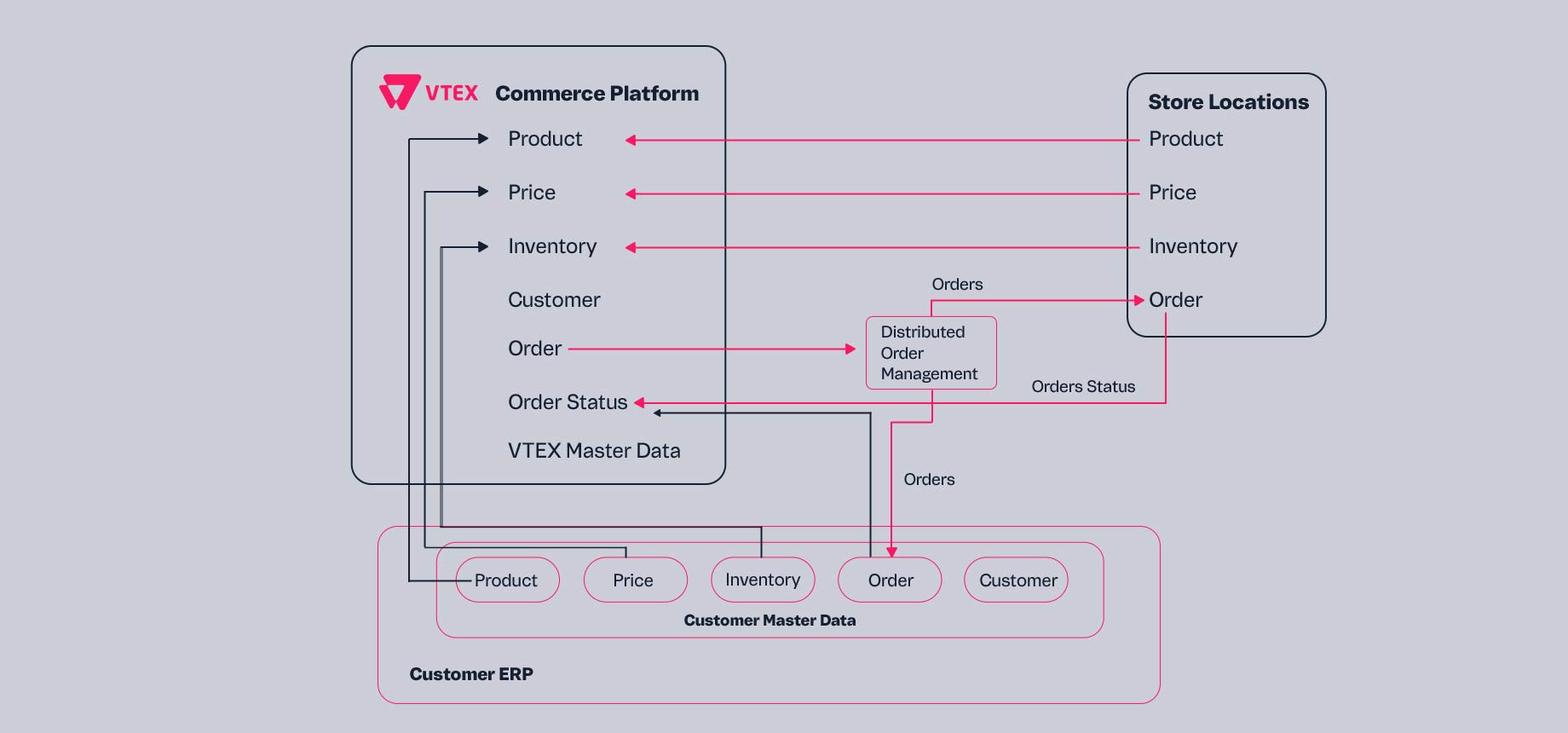
No one gets into retail thinking “I’m going to sell this one product at this one price in this one channel forever.” That’s not how retail works. Retail and customers are ever-changing and that’s a big part of what makes retail fun and exciting. One of the biggest changes in customer behavior in the age of digital commerce is the customer demand for more connectivity among retail channels.
Today’s customer expects that retailers are connected in all places and at all times. According to McKinsey, more than one-third of Americans have made omnichannel part of their regular routine. As more retailers implement omnichannel strategies, this is likely to increase.
Why? Because customers don’t see any differences between your retail channels. They want to choose and navigate seamlessly among those channels for their own shopping experiences that suit their own needs. A disjointed channel experience that frustrates a customer, rather than meeting their needs, is one of the fastest ways to lose a customer.
Improving customer experience is how you build a sustainable and profitable retail enterprise. An omnichannel strategy is a way to build customer loyalty because it delivers value to your customers by giving them more access to your brand and control over the shopping experience. Retailers who can provide the access and options for their customers will win.
So what exactly is omnichannel?

An omnichannel retail strategy looks at every retail sales channel not as separate pieces of the shopping experience, but as a connected environment to provide a richer customer experience.
Customers, both online and offline ones, can navigate this retail environment seamlessly from brick-and-mortar stores to mobile to social and even on to newer emerging channels. This happens because your retail channels are connected in a way that allows customers to create their own shopping journey using the available features of each channel in a complementary way.
How to win your customers through an omnichannel strategy
The big win for your customers with omnichannel is being able to combine the features your customers like that are particular to certain channels and making them available on multiple channels or even every channel.
For instance, TruRating, a CX solution that collects customer feedback in real-time, polled in-store and online customers to determine what they liked about each channel. They found that the in-store customers appreciated staff advice, being able to look at and touch products and not having to wait for delivery compared to online customers who valued convenience, a wider catalog and product reviews.
Omnichannel connects these channels to complement one another. This is how great customer experiences are built! The whole is greater than the sum of the parts.
Examples of exceptional omnichannel customer experiences
Here are a few examples in which the value of omnichannel shines through:
- Online shoppers selecting a store pick-up option that eliminates having to wait for delivery;
- Online stores displaying items available in nearby stores (bonus points if you can tell them where to find it in your store);
- Live Shopping broadcasts done simultaneously on your website and social media;
- In-store shoppers having access to product reviews;
- In-store shoppers having an expanded product selection via Endless Aisle.
Let’s deep dive into the last one to fully grasp the potential of an omnichannel commerce platform.
What is Endless Aisle in retail?
Endless Aisle in omnichannel gives your brick-and-mortar customers access to all your products, regardless of where they are physically stored, to browse and purchase. It is a successful strategy to engage and convert the traffic coming to your stores without being hindered by limited inventory in a single store. Using the omnichannel ecommerce platform, brick-and-mortar stores can sell inventory from your warehouse or other stores.
Another big win for your customers is by giving them more options and control over how to receive their orders. Customers want this control. Omnichannel strategies build around this and give customers the ability to choose the method of fulfillment. These options include traditional shipping methods, BOPIS (i.e. Buy Online, Pick-up In Store), Ship-to-Store or even a combination of fulfillment options within a single order.
Now that we can see the value of omnichannel, how do we go about implementing it?
3 steps for building a winning omnichannel strategy
Start with your customers!
This should be obvious. They’re the ones you’re trying to provide value to, after all. Find out their needs and wants on all your channels.
Modern retailers have amazing tools at their fingertips to gather this information, from POS data in stores, call center and customer service feedback, online reviews, and more. If you don’t understand and clearly define what your customers are asking for, then you are risking a lot of time and effort for nothing.
Identify what features you will do — and do them well!
If you can’t execute an omnichannel feature well it may be best to hold off until you can. Focus on what your organization can execute at a high-level. This is more about operations and logistics than technology. You want all areas of your retail enterprise bought-in to deliver an exceptional omnichannel customer experience.
Figure out the “how”.
Now that you’ve seen what your customers want and identified what your organization will do, you need to figure out the “how”. This is where technology comes into play to help you accomplish your strategy, but you can start by asking yourself:
- “How will I connect my store inventory to my website?”
- “How will I fulfill online orders from my stores?”
- “How can I implement endless aisles in my stores?”
- “How will I process online returns in my stores?”
Fortunately, modern omnichannel-focused ecommerce platforms like VTEX can handle much of the heavy lifting for your retail enterprise.
What your ecommerce platform needs to successfully implement omnichannel
The key to a successful omnichannel strategy is how retailers achieve this channel connectivity. Odds are your retail systems were added over time, not all at the same time. That presents challenges when implementing an omnichannel strategy because, like retail, technology also changes over time.
Some of the features and functionality a retailer needs for an omnichannel strategy may not exist in legacy systems or older SaaS solutions. A headless commerce platform like VTEX can help by making it faster and easier to implement your omnichannel strategy because it was designed with omnichannel in mind.
Remember that at the core of a powerful omnichannel ecommerce platform is the OMS, or order management system. The strength of the VTEX OMS is how well it can consume orders from various channels and send orders to their fulfillment location whether that be shipping from your warehouse or 3PL, shipping from a store or enabling BOPIS .
Your customers want the ability to choose where and how to receive their purchases and your technology must be powerful enough and smart enough to cater to those options.

TL; DR
An omnichannel strategy is not hard to implement as long as you’ve clearly identified what your customers want, gained organizational buy-in and put the right tools in place to execute your strategy.
Choosing a powerful omnichannel-capable digital commerce platform like VTEX can help you achieve the goal of creating exceptional customer experiences across all of your retail channels in a faster, simpler and more connected way.













